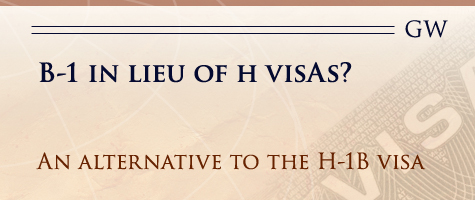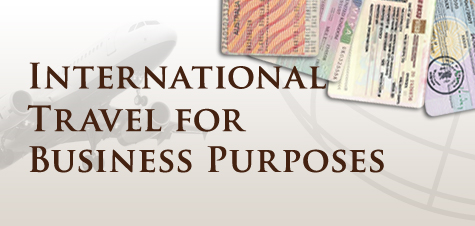Immigration Executive Action: What Families Need To Know Now
December 2, 2014 § Leave a comment
On November 20, 2014, President Obama announced his executive actions for improving the U.S. immigration system. The President’s initiatives focus centrally around two main points: accountability for undocumented immigrants and options to streamline certain immigration programs and benefits.
Working with the U.S. Department of Homeland Security (DHS), the President has identified ten major areas for executive action. These areas include:
- Expanding the Deferred Action for Childhood Arrivals (DACA) Program;
- Extending the Deferred Action Program to parents of U.S. Citizens and Lawful Permanent Residents (i.e. green card holders);
- Amending the Provisional Waiver Program to include spouses and children of green card holders;
- Revising parole rules to expand travel opportunities and clarify existing regulations; and
- Improving the citizenship process.
Each of the areas encompasses certain initiatives set to take place in the coming months. We have highlighted some of these initiatives below.
1. Initiatives for Undocumented Immigrants
- DACA Expansion: The DACA Program will be expanded to remove the upper age restriction and permit initial employment authorization for three years instead of two.
- Deferred Action for Parents: Deferred Action will be permitted for parents of U.S. Citizens and green card holders (born on or before November 20, 2014), who have continuously resided in the U.S. since January 1, 2010 and are not a threat to public safety. This Program will also allow requests for employment authorization.
- Provisional Waiver Program Amendment: The current Provisional Waiver Program (i.e. program allowing for individuals to apply for a waiver of unlawful presence in the U.S. before departing for a visa interview) will be amended to include adult children of U.S. Citizens and spouses and children of green card holders.
- Revisions to Parole Rules: The current parole rules (i.e. rules governing temporary authorization to enter the U.S.) will be revised to address the availability of parole to spouses, parents, and children of U.S. Citizens and green card holders seeking to enlist in the U.S. Armed Forces. The revisions will also clarify that using advance parole (i.e. travel authorization obtained in advance) to leave the U.S. is not considered a departure, even for deferred action individuals. This will result in undocumented individuals being able to leave the U.S. under advance parole without triggering the 3- or 10-year bar.
2. Initiatives for U.S. Citizenship
- Improvements to Citizenship Application Process: The application process for U.S. Citizenship will be improved to allow for fee payments by credit card. The possibility of partial fee waivers will also be assessed.
Each of the initiatives will be implemented in the coming months. The DACA expansion is set to occur in the next three months, while Deferred Action for Parents will be implemented in six months. DHS is working to integrate the changes into current policy.
What do the President’s initiatives mean for you? GoffWilson can help determine your answer. Please contact our office today for more information.
USCIS Responds to Typhoon Haiyan
November 20, 2013 § Leave a comment

Time after time we are reminded of the devastating impact of natural disasters.
Along with physical destruction and loss of life, these disasters impact a variety of different people and businesses. Typhoon Haiyan (referred to as “Yolanda” by Philippine authorities) formed off of the coast of the Federated States of Micronesia on November 2, 2013 and passed through the Philippines on November 8, 2013.
Recorded as one of the strongest storms on the planet, Typhoon Haiyan left a wake of destruction leaving thousands in precarious situations.
On November 15, 2013, the United States Citizenship and Immigration Services (USCIS) issued a statement reminding Filipino nationals of possible immigration relief measures, if requested. Understanding that natural disasters sometimes make establishing and maintaining a lawful immigration status difficult, USCIS has issued the following measures to ease the process for people affected from this disaster:
- Change or extension of nonimmigrant status for an individual currently in the United States, even when the request is filed after the authorized period of admission has expired;
- Extension of certain grants of parole made by USCIS;
- Extension of certain grants of advance parole, and expedited processing of advance parole requests;
- Expedited adjudication and approval, where possible, of requests for off-campus employment authorization for F-1 students experiencing severe economic hardship;
- Expedited processing of immigrant petitions for immediate relatives of U.S. citizens and lawful permanent residents (LPRs);
- Expedited adjudication of employment authorization application, where appropriate; and
- Assistance to LRPs stranded overseas without immigration or travel documents, such as Permanent Resident Cards (Green Cards).
If you, a family member, or someone you know is experiencing immigration difficulties from Typhoon Haiyan, or have questions on what we can do, please give GoffWilson a call; we are ready to help!
Applying for a Social Security Card
October 7, 2013 § Leave a comment
If you just received lawful permanent residence status or obtained a visa authorizing you to work in the United States, you may be wondering how to apply for a Social Security card.
The Social Security Administration provides Social Security cards to U.S. citizens, permanent residents (green card holders), and foreigners who have Department of Homeland Security authorization to work in the U.S.
The most convenient way of applying for a Social Security card is to request one as part of the immigrant visa application. During the visa application process, the foreign national may request a SSN on their visa application. After the foreign national arrives in the U.S., the U.S. government sends the Social Security card to the U.S mailing address provided on the visa application. So, there’s no need to wait in line at your local Social Security office! The card should be waiting in your mailbox within three weeks of your arrival in the U.S.
Nonimmigrants with work authorization from the Department of Homeland Security, as well as immigrants who did not apply for a SSN during the visa application process, must visit a Social Security office to apply for a card. In order for the Social Security Administration to verify your immigration information, you must wait 10 days from your arrival date to the U.S. to apply for the card.
After 10 days, you must complete an Application for a Social Security Card (Form SS-5) and provide current, unexpired documents proving age, identity, and work-authorized immigration status. (Note: The Social Security Administration only accepts original documents or copies certified by issuing agency.)
The SSA requires the following documents:
- Immigration Status: The applicant must provide a current U.S. immigration document. This could include: a Form I-551 (Lawful Permanent Resident Card) with your unexpired foreign passport or an I-94 card.
- Age: The applicant must present a foreign birth certificate. If you are age 12 or older you must also be interviewed by the SSA to ensure you do not already possess a SSN.
- Work Eligibility: I-94 card or DHS work permit (I-766)
- Identity: The Social Security Administration requires a current DHS document as proof of identity. Acceptable documents include: an I-94 card, I-766 work permit from DHS, or a Form I-551 with unexpired foreign passport.
Additional documents are required for students and exchange visitors. Foreign students with eligibility to work must provide a letter from their designated school official (DSO) identifying the applicant, confirming the school status, and identifying the employer and type of work the applicant will be doing.
The SSA also requires a letter from the student’s employer describing the nature of the job, the number of hours the applicant will be working, and the supervisor’s contact information. In addition, students must also provide their Forms I-20 as evidence of immigration status.
A card will be mailed to you at your U.S. mailing address as soon as the Social Security Administration, in collaboration with the Department of Homeland Security, verifies your documents. This can take several days or weeks. If you have any other questions, contact us. It’s what we do!
CBP rolls out New I-94 Process for Arrival/Departure Records
May 3, 2013 § 1 Comment
As of April 30, 2013, foreign travelers entering the United States (by air or sea) will no longer be issued a paper Form I-94 Arrival/Departure Card.
Instead, Form I-94 will be an electronic documentation of arrival with information obtained by scanning a traveler’s passport. This automation will streamline the entry process for travelers, facilitate security and reduce federal costs.
Customs and border officials will still stamp the passport with the date and traveler status at entry. Foreigners should then go to CBP.gov/I94 to review their record. Any errors discovered should be immediately reported to CBP.
If travelers need information from their I-94 admission record to verify immigration status or employment authorization, the record number and other information will be available at CBP.gov/I94.
Once the foreigner leaves the country, s/he will no longer have access to the records. Our immigration lawyers recommend that travelers print a paper version of their Form I-94 in order to maintain an immigration record of time spent in the U.S.
Please note that because advance information is only transmitted for air and sea travelers, CBP will still issue a paper Form I-94 at land border ports of entry.
Click here to see the dates and airports where the process will be rolled out, and please contact GoffWilson with any questions.
New I-9 Form Out Today!
March 8, 2013 § Leave a comment
The long-awaited and much-discussed revised Form I-9, Employment Eligibility Verification, will be introduced today according to a notice published in the Federal Register.
This is the form that must be completed by all employers to verify the employment eligibility of every new hire. United States Citizenship and Immigration Services (USCIS) has been working to revise the I-9 Form for more than a year.
The new edition, dated March 8, 2013, will take effect immediately on publication and employers will be required to use the new Form I-9 for their new hires as of May 7, 2013. Until then, however, employers may continue to use the August 7, 2009 or February 2, 2009 edition. Employers who are not using the I-9 Form following the 60-day grace period will be subject to fines and penalties.
Exact changes to the I-9 will not be known until the release of the Form. However, the revisions are expected in include:
- Expansion of the form from one to two pages (not including the “List of Acceptable Documents” and form instructions)
- Additional data fields (such as the new hire’s email address and phone number)
- Enhanced Form I-9 instructions
- A revised layout.
Employers do not need to complete the new Form I-9 for current employees for whom there is already a properly completed Form I-9 on file, unless re-verification applies.
We will post the new I-9 Form on our web page when released. Also, for those of you who maintain your I-9 Forms via an electronic software vendor, you should check with your vendor concerning their compliance with the new form. Additionally, this is a good time to think about additional training for your staff. You can contact GoffWilson with any questions. Immigration law is all we do!
How does the Visa Bulletin Look for you? Updates on Demand and Priority Dates
February 28, 2013 § Leave a comment
One of the hottest topics we’ve seen in immigration law lately comes from the March 2013 visa bulletin. The India EB-2 cutoff date continues to see very little forward movement due to upgrades where people are converting their employment-based applications from EB-3 to EB-2 while maintaining the earlier priority date.
In December 2012 alone, India EB-2 had 125 cases approved that were from 2003 or earlier. The spokesperson for the Department of State Visa Office reportedly has said EB-2 for India could easily reach the annual limit at the current 2004 cutoff dates.
EB-2 India demand continues to be very high, (there are approximately 42,000 India EB-2 cases in line with priority dates prior to May 2010). Thus, it is possible that the cutoff date may be retrogressed during this fiscal year.
However, any numbers not used in EB-1 could allow for more numbers to be used for EB-2 India. It is still unknown how many EB-5 and EB-1 numbers will migrate to EB-2.
Applicants switching from EB-2 to EB-1 or EB-3 to EB-2 or EB-1 are called “upgrades” and these are impacting other categories as well. Worldwide, EB-3 had 1,100 upgrades in December 2012 for cases which had priority dates of 2011 or earlier. By contrast, in 2007, there were only 72 upgrades for the year!
So, this idea is catching on. Upgrades have been an effective way to increase the applicant’s chances of processing his/her visa earlier. This may not continue to be an effective strategy.
EB-1 for India and China appear to have used their numbers for this year, but the rest of open EB-1 numbers can “fall across” to satisfy the need from India and China for EB-1, so no retrogression is expected at this time.
There are 12,000 India EB-3 cases with priority dates before January 2004. The Department of State Visa Office has very good information regarding how many India EB-3 cases are lined up for older dates, due to the 2007 retrogression. For example, there are 63 cases with a November 18, 2002 priority date. Accounting for demand in India EB-3 has been fairly accurate.
India EB-3 has 44,000 cases with priority dates before August 2007, which have been pre-adjudicated, though final approval and visa issuance has not taken place due to priority date retrogressions over the past several years. Please continue to monitor the Visa Bulletin by clicking here for yourself or someone you know that is affected by the long wait for immigrant visas.
Or contact GoffWilson. Immigration law is what we do. We are here to help!
Are You Ready for H-1B Season? Get ‘Em Before They’re Gone!
January 24, 2013 § Leave a comment
It’s an exciting time of year for immigration lawyers. H-1B Season is almost here!
(It’s true, we’re not the most exciting bunch.)
These hard to get and always-valued visas will be up for grabs in less than 100 days. Are you ready?
Don’t miss out this year as we expect the cap of H visas (only 65,000 released) to be filled by the first week of April. As the economy improves, there is more and more call from employers wanting to hire IT consultants, healthcare workers and other high-tech folks and all of these professions require H visa status.
Keep in mind we can file April 1, 2013 for a visa that allows a foreign employee to work for your company beginning October 1, 2013.
There are always a lot of things to consider for an H visa, such as cap-gap issues, travel, staffing and consultant workplace issues and more. Also, if you hope to employ a graduate now working for you in OPT status when that status runs out, you’ll want to file for the H visa on April 1.
GoffWilson can assist in H-1B visa applications and all areas of immigration law. Contact us today to discuss your options. It’s what we do!
What to do until October 2013? An Alternative to the H-1B Visa
December 13, 2012 § 1 Comment

The United States economy is showing encouraging signs of job growth, prompting employers to call for qualified foreign workers to fill specialized knowledge positions in high technology, engineering, and other sectors.
Sadly, many employers have discovered that there are no H visas available for these workers who are so highly sought after. Beginning on Oct. 1, 2013, there will be only 65,000 visas available.
Last year, all available visas were claimed in less than 10 weeks. Our law firm focuses on immigration law and we expect the demand will be even higher this year.
While waiting for the opportunity to apply for an H visa, we advise employers to consider an alternative referred to as a B-1 in lieu of an H-1B.
To qualify, applicants must meet all of the requirements of an H visa: The job is a specialty occupation and requires at least a bachelor’s degree, and the prospective candidate has the requisite education/work experience.
The major differences are:
- The foreigner is coming to the U.S. for a very short period of time, generally no more than six months.
- There is a foreign company with an office that will pay the wage in the foreign country for all the time in the U.S.
- The U.S. based company will at the most cover incidental expenses.
- The foreign candidate can establish ties to her country assuring return at the conclusion of the work visa.
The entire application is made at the U.S. Consulate abroad. The application includes all that would be required for an H-1B visa, plus the needs of the B-1 visa.
In limited situations, a B-1 visa in lieu of an H-1B visa could fill the temporary need for a U.S. business to hire a foreign employee. Meanwhile, mark your calendar for February 1, 2013, which is when you should begin planning for the filing of an H visa for April 1, 2013, the first day that an application may be filed for an Oct. 1, 2013 start. You don’t want to miss the opportunity to employ that high tech worker from outside the U.S. and fill your opening. If this sounds like something that might help your business, please give GoffWilson a call. It is what we do and we are ready to help!
New England Companies Face I-9 Violations for American Workers
November 28, 2012 § Leave a comment
United States Immigration and Customs Enforcement has fined almost 50 New England businesses more than $600,000 in this past year for I-9 violations. This is a huge increase over the previous year and all indications are that these fines will increase again next year.
As stated in its announcement, the immigration service plans to expand the number of businesses audited next year. As noted, the Obama administration has made I-9 enforcement against businesses a priority to weed out undocumented workers and employees in industries known or alleged to hire undocumented workers.
Traveling Abroad for Business? Don’t Leave Home Unprepared
August 22, 2012 § Leave a comment
Business travel regulations can be confusing because every country has its own set of regulations regarding permissible activity in country. There is no single visa for all countries when dealing with business matters. However, with proper visa planning, the company and the business traveler can both have a good experience abroad.
Once an employee knows she or he has an urgent work related matter involving travel abroad, Global HR and Business Managers need to put the immigration concerns in the forefront when sending someone abroad for business. The visa planning is as important as the location of the trip, the work to be done and housing. In addition, Business Managers and HR need to be aware that immigration regulations may have changed in the particular country since the last time an employee was sent abroad. These changes can cause delays if they are not anticipated.
While most HR and Business Managers dealing in international business are keenly aware of the immigration concerns for other countries, a solid, repeatable procedure is needed to ensure compliance for the traveling employee.
First, the company should have guidelines set out for Global HR to follow when international travel is needed. This should include finding out what the requirements are for visas in a given country and how long it takes to process, to ensure visa issuance within the necessary timetable. Requirements for every country can be different, even for a relatively short stay of three weeks or less.
Second, the travelling employee should be briefed on what is needed to document the legitimate travel and activity in the country to avoid any delays or refusals at immigration. Business travelers can be subjected to scrutiny by border agents and Global HR can prepare them by supplying the needed documents such as travel itinerary, contacts in the foreign country, work to be performed, return tickets, and the like. The employee should ideally have all the necessary information in a dossier prepared for him/her.
We recommend that you contact us with any global immigration issues to be sure your company and its employees have a smooth flight and are able to successfully complete your business abroad. We can help with global visa applications, transferring employees to other countries, including transferring employees between countries other than the US. Call us, it’s what we do!







